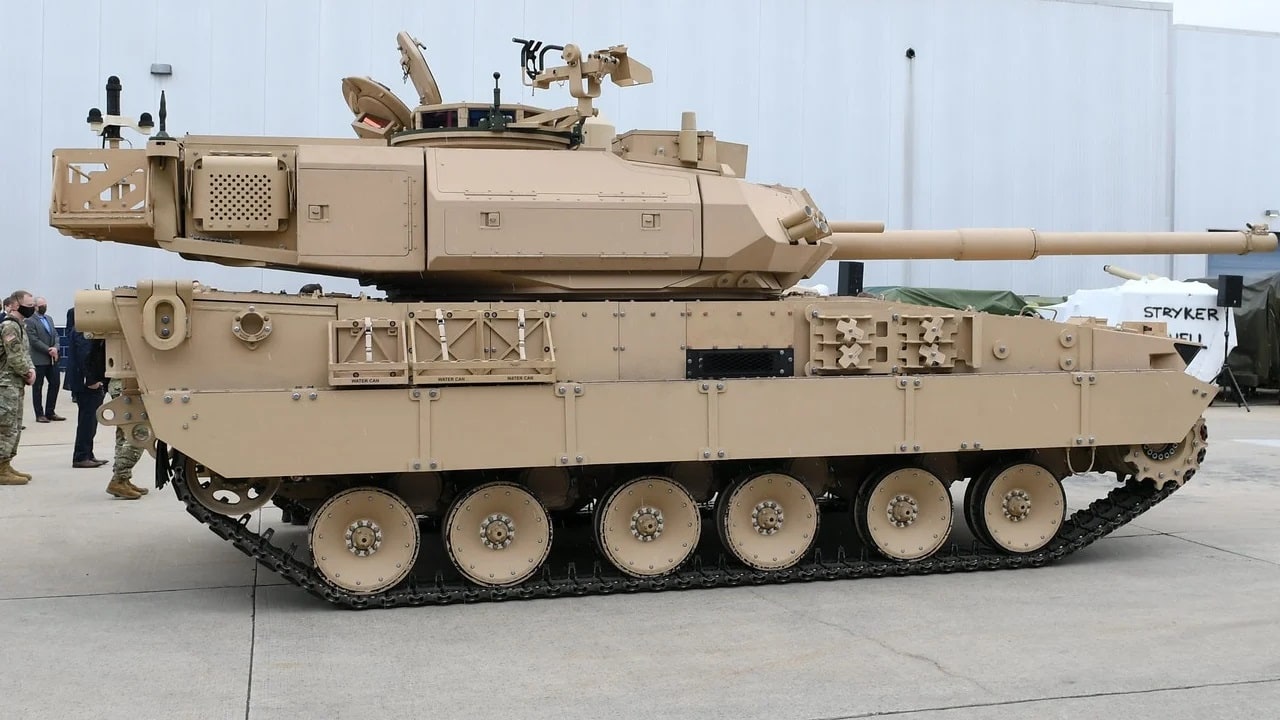Just when you thought tanks were becoming obsolete with their stunning losses to anti-armor precision-guided missiles in Ukraine, the U.S. Army is getting a new light tank. Is this a good idea? The army has given this armored vehicle the predictably vague name – the Mobile Protected Firepower (MPF) program. The new tank will be embedded with infantry units to give these soldiers more firepower and protection. Let’s explore whether this tank is needed.
Mobile Protected Firepower: Large Buy of Tanks
The Army said on June 28 that the bid for this vehicle was awarded to General Dynamics Land Systems for $1.14 billion to deliver 96 tanks. The first batch of 23 goes to the troops in December 2023. After further training, testing, and evaluation, the tank will be deployed full time to infantry units by 2025. Defense News reported that this vehicle will “improve mobility, protection, and direct-fire capabilities for Infantry Brigade Combat Teams.”
Testing Reportedly Worked Out Well
The army will eventually buy a whopping 504 of these small tanks with a life cycle cost of $6 billion. Paratroopers from the 82nd Airborne first tested the prototypes in 2021. Then soldiers whose military occupational specialty is armor ran the tank through its paces. Tankers were convinced that the new tank is similar to the Abrams M1A2, especially the fire control system, and they did not need elaborate training to run the new tank.
Mobile Protected Firepower: Is It Similar to the Abrams?
The MPF vehicle has a smaller caliber gun compared to the Abrams – 105mm versus 120mm. It is based on the Griffin II light tank. The turret is similar to the Abrams so that partially explains the evaluators’ ability to run it without much difficulty. The army believes it integrated many suggestions from soldiers that will help the army build a store of techniques and tactics for future use.
Soldiers Provided Feedback
Major General Ross Coffman said in an army news release, “MPF represents a new capability for the Army, allowing our light maneuver forces to overmatch adversaries. Through multiple Soldier touchpoints, our Soldiers have operated the prototypes and provided crucial feedback to the design team, ensuring our forces will have the asset they need on the future battlefield,” said Major General Ross Coffman, director of the Next Generation Combat Vehicles Cross Functional Team.
There Is an Opening for It to Plug a Capability Gap
Is this tank a good idea? It depends on where and how it is deployed. When I served with the army in South Korea, we were in a separate light infantry battalion with only HUMVEEs armed with M2 .50 caliber machine guns or Mk-19 grenade launchers. The hilly Korean terrain is better suited for tanks and there was an armored battalion with Abrams tanks at Camp Casey near the DMZ where I was based. In this situation, a light tank would have been a good idea since we were so outgunned and unprotected from enemy tanks. However, we were not trained to be integrated with tanks in combat so there would have been a learning curve.
Make It Part of the Cavalry Recon Unit
If used in Europe against Russia, the light tank in flat terrain would be susceptible to anti-tank missiles depending on how good the armored protection is for the new vehicles. Again, the issue is training. Can you get infantry soldiers trained on the tactics and procedures with armored combat? The infantry brigade combat team has three infantry battalions, a cavalry squadron, an engineer battalion, an artillery battalion, and a support battalion. The army likely plans to assign the new light tank to the cavalry reconnaissance squadron. This means tankers would serve in the infantry brigade combat team. The light tanks would also be threatened by enemy airplanes and drones since there is not an anti-aircraft element in infantry brigade combat teams.
Mobile Protected Firepower: How About Airborne Capable?
Is the new light tank light enough to be dropped from aircraft so it could serve with airborne units? It is not clear from the initial media coverage that this is the case. The Sheridan was the last light tank to serve in the army and the 82nd Airborne had a battalion of Sheridans that took part in operations in Panama and in Operation Desert Shield and Operation Desert Storm. The tank battalion of Sheridans was disbanded in 1997. So, the 82nd Airborne has not used tanks in 25 years. There would again be a learning curve for paratroopers to be integrated with the new tank. The 82nd Airborne tested it in 2021 so they have some experience.
The real issues for the new light tank is training and survivability. There is room for the light tank in infantry brigade combat teams, but it remains to be seen whether light infantry and airborne units are completely ready for the new vehicle. Also, how will it survive in a contested environment against enemy tanks, anti-tank missiles, warplanes, and drones? It appears the army is forging forward with the new light tank and assumes the troops will take to it with little trouble. Infantry soldiers may have no choice but to adapt to the new vehicle.
Now serving as 1945’s Defense and National Security Editor, Brent M. Eastwood, PhD, is the author of Humans, Machines, and Data: Future Trends in Warfare. He is an Emerging Threats expert and former U.S. Army Infantry officer. You can follow him on Twitter @BMEastwood.

